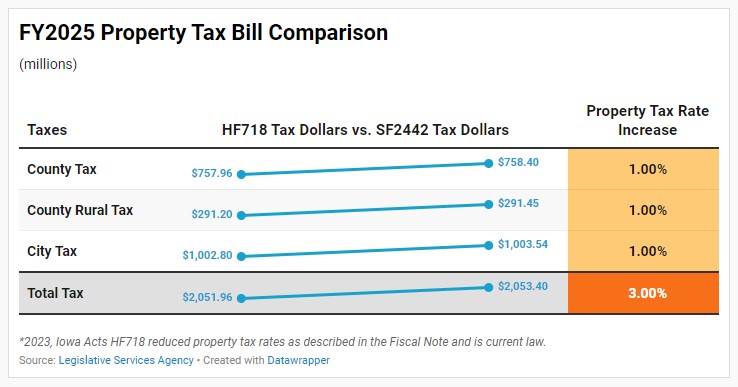Pope Francis And The Catholic Church: Progress On Abuse But Reforms Remain Unfinished

Table of Contents
Pope Francis' Actions to Combat Abuse
Pope Francis has undertaken several initiatives to combat sexual abuse within the Church. These range from increased accountability measures for clergy to efforts to strengthen canon law and improve transparency.
Increased Accountability for Clergy
A key aspect of Francis' response has been a push for increased accountability for abusive clergy. This includes:
-
Establishment of stricter protocols: The Vatican has implemented stricter protocols for reporting and investigating allegations of abuse, mandating that bishops report all allegations to the Congregation for the Doctrine of the Faith (CDF). These protocols aim to ensure timely and thorough investigations.
-
Dismissal and defrocking: While the exact numbers remain a subject of debate, numerous priests accused of sexual abuse have been dismissed from the clerical state (defrocked) under Francis' papacy. However, the process remains lengthy and complex in many cases.
-
Collaboration with civil authorities: The Vatican has increased its collaboration with civil authorities in investigations, acknowledging the importance of secular justice systems in holding perpetrators accountable. This cooperation, while improving, still faces challenges in some jurisdictions.
-
Examples: The case of Theodore McCarrick, a former cardinal, exemplifies a high-profile instance where accountability measures were implemented, albeit after significant delay and controversy. Specific statistics on the number of priests removed from ministry due to abuse allegations are difficult to obtain comprehensively, owing to inconsistencies in reporting across different dioceses and countries.
Strengthening Canon Law
Amendments to canon law have aimed to improve the legal framework for addressing abuse cases within the Church. Key changes focus on:
-
Quicker and more efficient proceedings: Reforms intend to streamline the process for investigating and prosecuting accused clergy, aiming for speedier resolutions to protect victims and prevent further harm.
-
Improved victim support: Increased emphasis has been placed on providing better support and restorative justice initiatives for survivors of abuse, recognizing the profound impact of trauma on individuals and families.
-
Legal changes: The modifications to canon law include provisions for stricter penalties, clearer definitions of offenses, and improved mechanisms for handling complaints. However, the effectiveness of these changes continues to be debated, with some criticizing the slow pace of implementation and the lack of consistent application globally.
-
Limitations: Canon law's limitations stem from its inherent structure and its potential conflicts with national legal systems, leading to ongoing challenges in ensuring accountability and consistent application of justice.
Increased Transparency and Disclosure
Pope Francis has also emphasized the need for greater transparency within the Church regarding past abuse cases. Initiatives include:
-
Improved access to information: Efforts have been made to improve access to documents and information for researchers and survivors, promoting a more open approach to addressing the issue.
-
Increased transparency initiatives: The Vatican has established commissions and task forces aimed at investigating historical cases and promoting transparency, although access to information remains uneven across different dioceses.
-
Examples: The establishment of independent commissions to investigate past abuse cases in certain countries represents a step towards greater transparency.
-
Challenges: Achieving complete transparency and overcoming the culture of secrecy that has historically surrounded abuse cases within the Catholic Church remains a significant challenge. Resistance from within the hierarchy continues to hamper full disclosure in some instances.
Ongoing Challenges and Criticisms
Despite the steps taken by Pope Francis, significant challenges and criticisms persist regarding the Church's response to the abuse crisis.
Slow Pace of Reform
One major criticism centers around the slow pace of reform implementation.
-
Lack of visible consequences: Critics point to a perceived lack of visible consequences for high-ranking officials implicated in cover-ups or inaction, leading to accusations of insufficient accountability at the highest levels.
-
Inconsistent application of sanctions: Concerns remain about a lack of consistency in applying sanctions across different dioceses and countries, leading to uneven levels of accountability.
-
Examples of slow response: Several high-profile cases have drawn criticism for the perceived slow response or lack of decisive action from Church authorities.
-
Unresolved cases: The number of ongoing investigations and unresolved cases remains substantial, highlighting the continuing need for action and improved procedures.
Resistance from Within the Church
Significant resistance to reform exists within certain sectors of the Church hierarchy.
-
Conservative factions: Conservative factions within the Church have actively resisted reforms, citing theological or doctrinal objections.
-
Entrenched power structures: The entrenched power structures within the Church hierarchy have proven difficult to dismantle, hindering effective implementation of reforms.
-
Examples of resistance: Specific examples include opposition to mandatory reporting policies, resistance to greater transparency initiatives, and reluctance to fully cooperate with civil authorities in investigations.
-
Factors contributing to resistance: The factors contributing to resistance include deeply rooted cultural norms, fear of scandal, and a reluctance to relinquish power and authority.
Need for Systemic Change
Addressing individual cases is insufficient; systemic changes are crucial to prevent future abuse.
-
Improved training and vetting: More robust training and vetting procedures for clergy are essential to identify and prevent individuals with predatory tendencies from entering the priesthood.
-
Culture of accountability: Fostering a culture of accountability and transparency within the Church requires a fundamental shift in attitudes and practices.
-
Recommendations for systemic change: This includes independent oversight bodies, mandatory reporting laws, and thorough background checks for all clergy.
-
Creating a safer environment: Systemic change should prioritize the creation of a safer environment for children and vulnerable individuals within the Church, including the establishment of child protection programs and the implementation of robust safeguarding policies.
Conclusion
While Pope Francis' papacy has witnessed significant steps towards addressing the sexual abuse crisis within the Catholic Church, the reforms remain unfinished. Increased accountability, transparency, and systemic changes are crucial to ensure the safety and protection of vulnerable individuals and restore trust in the institution. The progress made is undeniable, but the journey towards complete healing and justice for survivors is far from over. The ongoing struggle for justice necessitates continued vigilance and pressure on the Catholic Church to fully implement meaningful reforms. Let us continue to demand accountability, transparency, and a commitment to ending sexual abuse within the Church. Hold the Catholic Church accountable and keep the conversation about Pope Francis and the Catholic Church's progress on abuse at the forefront of public discourse.

Featured Posts
-
 Chinas Elevated Pain Threshold A Long Term Strategy Against Trumps Policies
Apr 25, 2025
Chinas Elevated Pain Threshold A Long Term Strategy Against Trumps Policies
Apr 25, 2025 -
 Wigan And Leigh College Students Floral Designs On Display At Local Flower Show
Apr 25, 2025
Wigan And Leigh College Students Floral Designs On Display At Local Flower Show
Apr 25, 2025 -
 Jack O Connell On Michael Caine The Daunted Spitting Experience
Apr 25, 2025
Jack O Connell On Michael Caine The Daunted Spitting Experience
Apr 25, 2025 -
 10 Exceptional European Shopping Adventures
Apr 25, 2025
10 Exceptional European Shopping Adventures
Apr 25, 2025 -
 Trumps Attack On Currency Manipulation Implications For The Krw Usd
Apr 25, 2025
Trumps Attack On Currency Manipulation Implications For The Krw Usd
Apr 25, 2025
